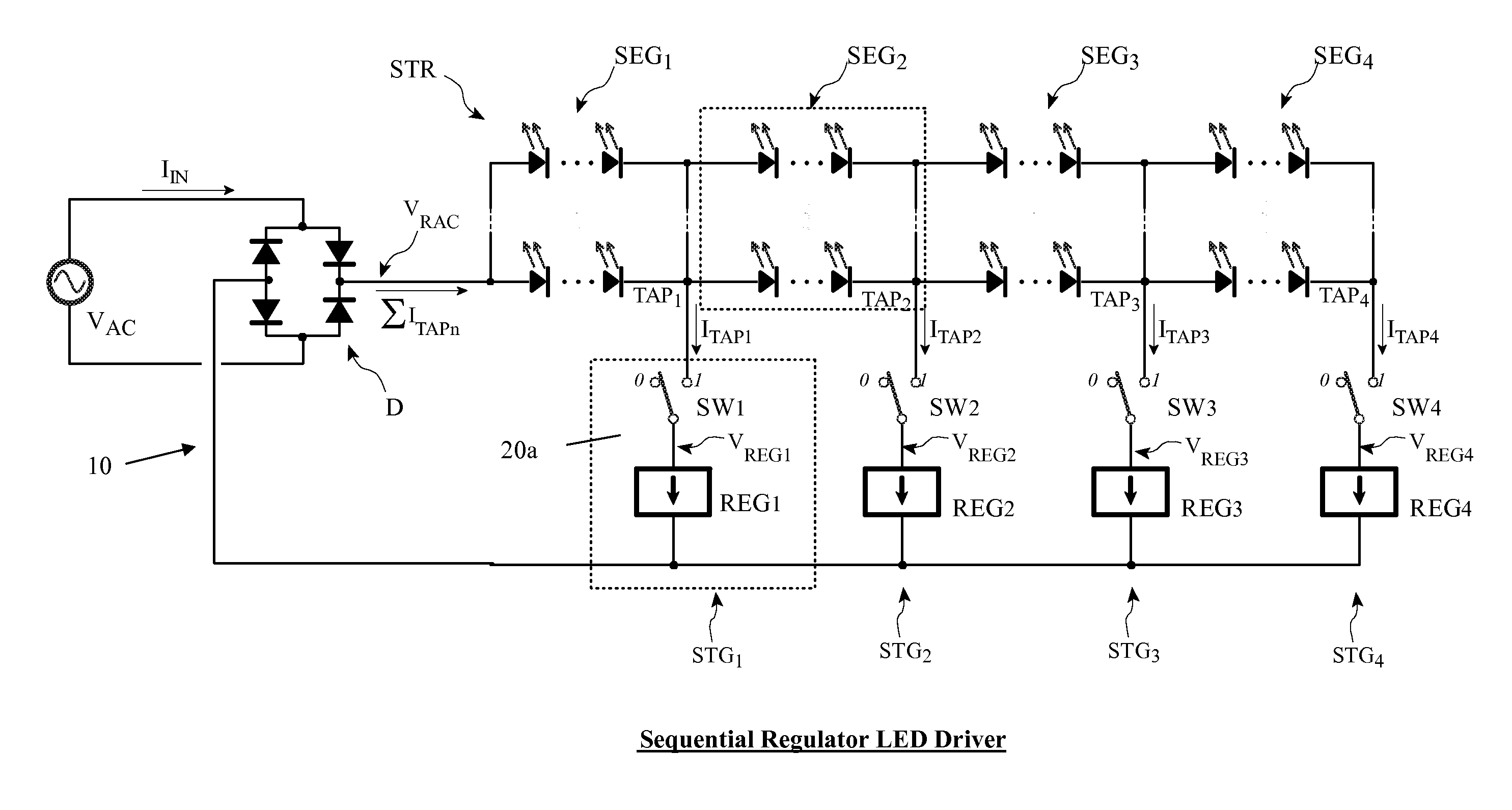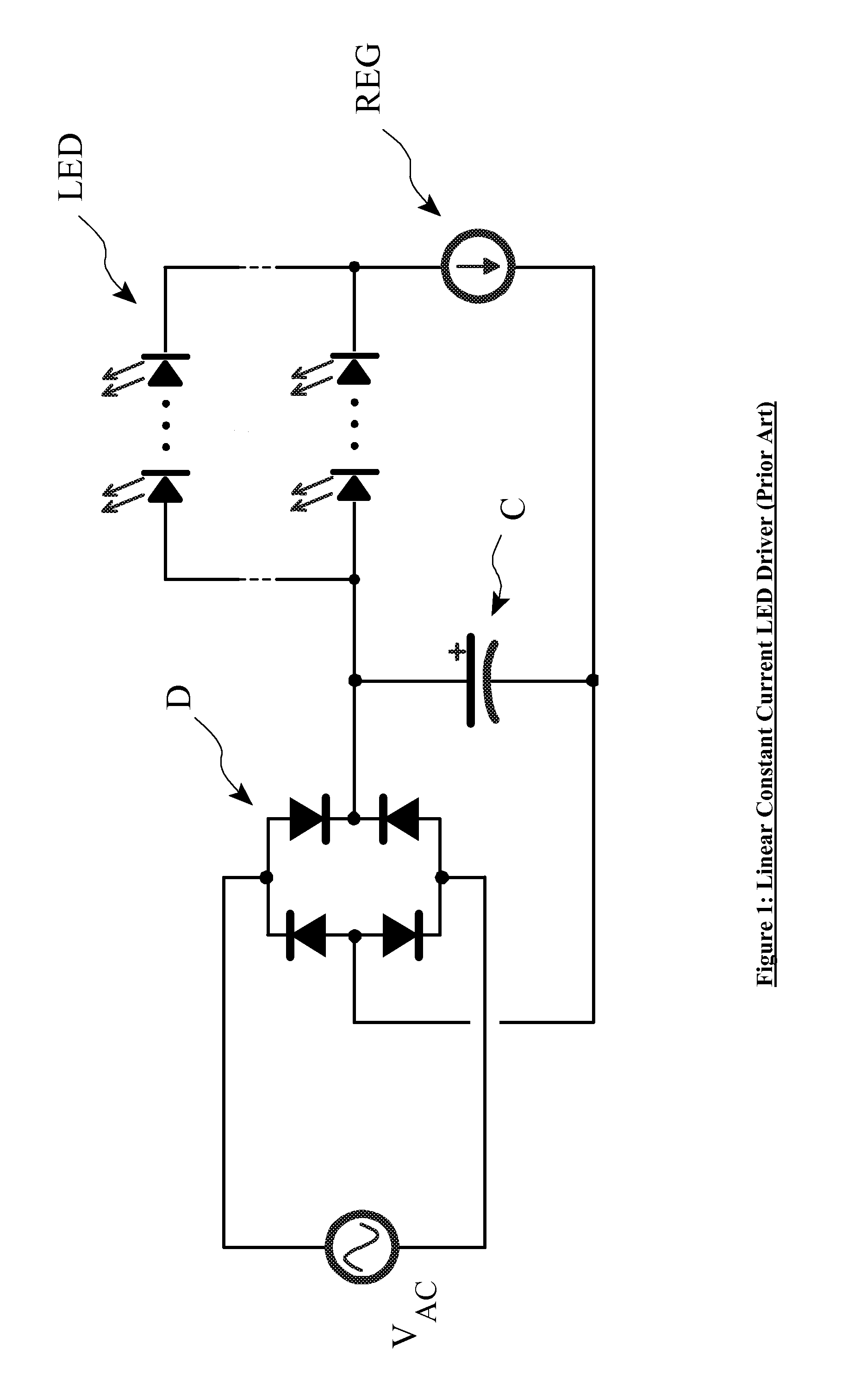Multiple stage sequential current regulator
a current regulator and multi-stage technology, applied in the direction of ignition automatic control, process and machine control, instruments, etc., can solve the problems of poor power factor, inconformity of line current harmonics, and inefficient operation
- Summary
- Abstract
- Description
- Claims
- Application Information
AI Technical Summary
Benefits of technology
Problems solved by technology
Method used
Image
Examples
Embodiment Construction
[0023]Referring to FIG. 3 there is shown a generalized schematic circuit diagram of an LED driver circuit 10 of the present invention. An AC voltage source (VAC) provides power to the driver circuit 10. In this example, a full-cycle rectifier (D), comprising of a full wave bridge rectifier with four diodes converts the alternating polarity of VAC to a positive voltage. This rectified AC voltage (VRAC) is provided to the top of the LED string (STR). The string is divided into segments (SEG1 thru SEG4), which are connected in series. Within each segment, the segment may consist of any combination of series and parallel connected LEDs, or even just a single LED. The junction between segments, including the bottom of the string (TAP1 thru TAP4) are connected to current control elements, or regulators (REG1 thru REG4). Switches SW1 thru SW4 are generalized elements allowing the regulators of each stage to be individually enabled / disabled. Alternatively, the circuit 10 can be a self commu...
PUM
| Property | Measurement | Unit |
|---|---|---|
| voltage | aaaaa | aaaaa |
| alternating current voltage | aaaaa | aaaaa |
| current | aaaaa | aaaaa |
Abstract
Description
Claims
Application Information
 Login to View More
Login to View More - R&D
- Intellectual Property
- Life Sciences
- Materials
- Tech Scout
- Unparalleled Data Quality
- Higher Quality Content
- 60% Fewer Hallucinations
Browse by: Latest US Patents, China's latest patents, Technical Efficacy Thesaurus, Application Domain, Technology Topic, Popular Technical Reports.
© 2025 PatSnap. All rights reserved.Legal|Privacy policy|Modern Slavery Act Transparency Statement|Sitemap|About US| Contact US: help@patsnap.com



